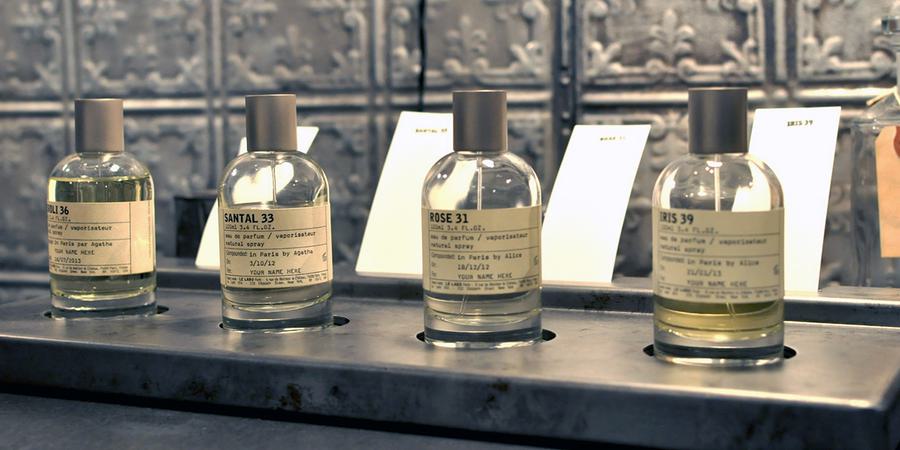Access all areas: Brand transparency in store
Access all areas. We look at stores that give a window in to the inner workings of the brand in order to create transparency and trust.


Access all areas. We look at stores that give a window in to the inner workings of the brand in order to create transparency and trust.


Previously hidden spaces such as the workshop, studio or laboratory are increasingly becoming part of the retail space, giving an unprecedented insight into what usually goes on behind-the-scenes – from product testing and design to manufacture. What’s more, brands are enabling customers to take the reins and create or customise their own pieces. The strategy promotes brand trust and, in turn, loyalty. Equally, behind-the-scenes entertainment can enrich the store experience and boost dwell-time.

We’re seeing a surge in stores resembling laboratories as part of this movement. These scientific-styled retail spaces act as shorthand for brand expertise and product prowess, implying that goods are (responsibly) tried and tested, and get real results.
H&M was an early adopter, bringing a ‘quality lab’ to the shop floor at its Mexico City flagship to showcase the product testing process its garments undergo, as was Spanish confectioner Papabubble, which has made a feature of its ‘candy artists’ working heated sugar in in-store ‘labs’ from Amsterdam to Taipei.
Minimal white spaces, glass beakers and tubing, orderly shelving, long, metal worktops – these are the hallmarks of the ‘modern apothecary’ store interior. Examples include NY-based perfumery Le Labo and the Fragrance Lab pop-up at Selfridges earlier this year; Toronto’s Colour Lab hair salon, with lighting made from test tubes and web graphics mimicking the periodic table; and Jugen, a Mexican juice and wellness bar, which adds science books and flasks to the VM mix. From uniform (staff at London tea boutique Bubbleology wear white coats) to packaging (see confectionary brand Happy Lab’s conical flasks and test tubes) the trend is wide reaching.

While beauty and F&B brands have a natural affinity with the lab setting, working ateliers or workshops are increasingly becoming an in-store fixture for fashion retailers.
Karen Millen included a full working design studio in its new Brompton Road flagship where shoppers can commission made-to-measure garments, while Anya Hindmarch’s NY flagship, styled like an artist’s studio, features a workshop for leather repairs and customisation. Last year, Elie Tahari opened an experimental pop-up in New York that put the label’s inner workings on show, including live model castings, photo shoots and pattern cutters and seamstresses making the upcoming collection.
Tech brands are also getting in on the act. iSmash splits its Kings Road HQ into three zones: a personalisation studio (consumers are able to create their ideal phones by selecting both colour and finish), a repair lab, and a ‘protect and enhance’ area for buying off-the-peg cases and accessories. The open-plan layout allows customers to see hyper-skilled technicians at work. Normal, a US brand designing bespoke headphones, invites customers to come to its New York factory to create personalised 3D-printed earphones and customised laser-etched carrying cases.
The trend is also in evidence in our work with Jigsaw on the Duke Street Emporium concept, as a window gives a sneak peek into the brand’s PR office.

These spaces are often complimented with services that empower customers to design or customise their own purchases. Opening up peer-to-peer engagement in way has benefits to both sides: consumers’ desires for self-expression and ownership of something unique are sated, while brands can use it to gain a greater understanding of their customers.

In our recent design of Timberland’s Regent Street store, we added a brand experience room where shoppers can customise their purchases using coloured laces and studs. Canadian lip-care brand Bite has opened a Custom Lips Lab in New York, featuring a bar where customers work with an expert to create their ‘signature colour’ lipstick. Meanwhile, the ‘interactive’ take at Converse’s San Francisco flagship lets individuals screen-print their own designs or graphics selected from the brand’s iPad catalogue onto footwear, apparel and accessories.

As the examples here show, this trend has currency for every type of retailer – from beauty to technology, food to fashion, high street to luxury. Nuances exist between the different age groups being targeted, though. Co-creation concepts are potentially most adept for the 16-24 demographic, identified in our Influencing Shopper Behaviour report as the ‘teach me’ generation who shop in packs, spend longest in stores and have a hunger to learn. Coming of age in the social media era, self-expression is second nature to this tribe, so brands should allow them to put a personal stamp on product in a theatrical retail environment. Meanwhile, our research showed that more mature consumers need to be convinced provenance and expertise are up-to-scratch via more in-depth solutions; transparent, R&D-based store concepts help show their opinion and intelligence are valued.